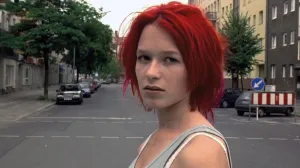Comics readers, especially those that pay attention to previews and order their books in advance, rarely have an opportunity to be surprised when checking out the shelves of their local comic book shop. That was shaken up with the release of a new Image Comics series Die!Die!Die! this summer. Without any warning it appeared in stores orders in July ready to be sold the very next day. The series, from artist Chris Burnham and writers Robert Kirkman and Scott M. Gimple, tells of a fast-paced conspiracy driven by some of the deadliest spies imaginable.
Videos by ComicBook.com
While the surprise made for an especially exciting debut, the return of Chris Burnham to a monthly comics series would have provided all the buzz any new series needed for a big launch. Burnham has made a name for himself in superheroes (e.g. Batman Incorporated) and the creator-owned scene (e.g. Nixon’s Pals and Nameless). Each of his pages reveals a keen eye and careful attention for detail in everything from the folds of a glove to the iconography within panel layouts. Die!Die!Die! Makes it clear that Burnham is pushing his craft as hard as ever with each new action sequence.
We were able to ask Burnham a few questions via email about his newest series, diving into everything from the big surprise to some of the more stomach-churning moments in Die!Die!Die! thus far.

ComicBook.com: I’d like to start before you even began sketching on Die!Die!Die!. The series probably delivered the most unique debut of 2018 with its surprise launch. As one of the few people to develop the comic and carry that secret, how did you first come into contact with both the idea for the series and the concept of keeping it a secret?
Chris Burnham: Robert Kirkman pitched me the book over breakfast a few years ago. And if I’m remembering correctly he had the crazy release scheme in mind from the very beginning.
Being a comics artist is already described as a relatively lonely profession. Did the combination of not even being able to discuss your work pose any unique challenges leading up to the surprise debut?
I work at Garage Art Studios with (in alphabetical order) Dennis Culver, Tony Fleecs, Drew Johnson, and Chris Moreno, so it’s not too lonely! I couldn’t discuss EVERYTHING with them, but they were still able to offer feedback on the art, et cetera.
Were there any close calls along the way?
Nothing specific that leaps to mind. At conventions I’ve often been in the situation where I’m deeply involved in a juicy gossip-filled conversation with another pro and at some point I look over and realize there’s a fan standing right there. How long were they there? What did they hear? Which “Robert” did they think we were talking about?? Gulp! At that point you just have to hope they aren’t a Little Bleeder or whatever.

You are at a stage in your career where you can point to a pretty proud bibliography with some very impressive work in a wide variety of stories with some of the biggest publishers and co-creators in comics. When seeking out your next project, what was it about Die!Die!Die! that made it click for you?
Robert Kirkman’s got one of the best track records in comics, and I had a brand-new baby to feed. If he pitched me Telephone Book Funnies I’d probably have said yes!
One thing that I have been impressed by in Die!Die!Die! is the relentless pacing of the series, pushing action sequences more quickly than anything of yours I’ve read before. Reflecting on what you have done so far, are there any specific elements of your style or storytelling you have trying to alter or experiment with?
I think the main thing that’s different between Die!Die!Die! and everything else I’ve done is the high panel count. We’re really cramming a lot of panels in there. I don’t think I’d ever done the straight nine-panel grid before… It’s an interesting challenge to convey all that information without making it look too crowded and uninviting.
Along those same lines, is there anything about your work on Die!Die!Die! so far that has surprised you?
Drawing all day gives you a lot of opportunities for little happy accidents. And once in awhile I’ll just really nail a facial expression or some minor detail in a way that’s very exciting and gives me that, “Oh, shit! I might finally be getting good at this!” feeling.

You’ve never shied away from violence in the past, but Die!Die!Die! still manages to pack a very serious punch. When imagining a sequence that relies on some intense reconfigurations of the human anatomy, do you have a specific approach to drawing those elements?
I head on over to Google Images and see what horrors the Internet has on offer! Then I’ll try to get that disgusting reality across in a way that’s dynamic and easy to read.
Are there any panels that you’ve needed to walk away from the drawing board for a bit after completing?
I don’t want to spoil anything, but there’s a bit in issue four that’s pretty rough. Neck trauma never used to gross me out when I was growing up, but ever since I read a particularly graphic description of Nicole Brown Simpson’s murder, throat stuff has really pushed my buttons.
Could you also speak to your collaboration process with the rest of the creative team? How do you handle story with Robert Kirkman and is there a specific method to how you and Nathan Fairbairn develop the combination of linework with colors?
I’ll ask Robert little questions about specific details and send along visual reference and the occasional suggestion to Nathan. But for the most part, Robert and Scott [M. Gimple] write it, I draw it, Nathan colors it, and Rus [Wooton] letters it.
This last question is something I always like to ask creators: Is there anything you are particularly looking forward to seeing readers respond to in your work on Die!Die!Die!?
There are some very silly gags coming up and I thiiiiink people are going to love them. Unless they hate them.
This interview has been lightly edited for flow and clarity.








